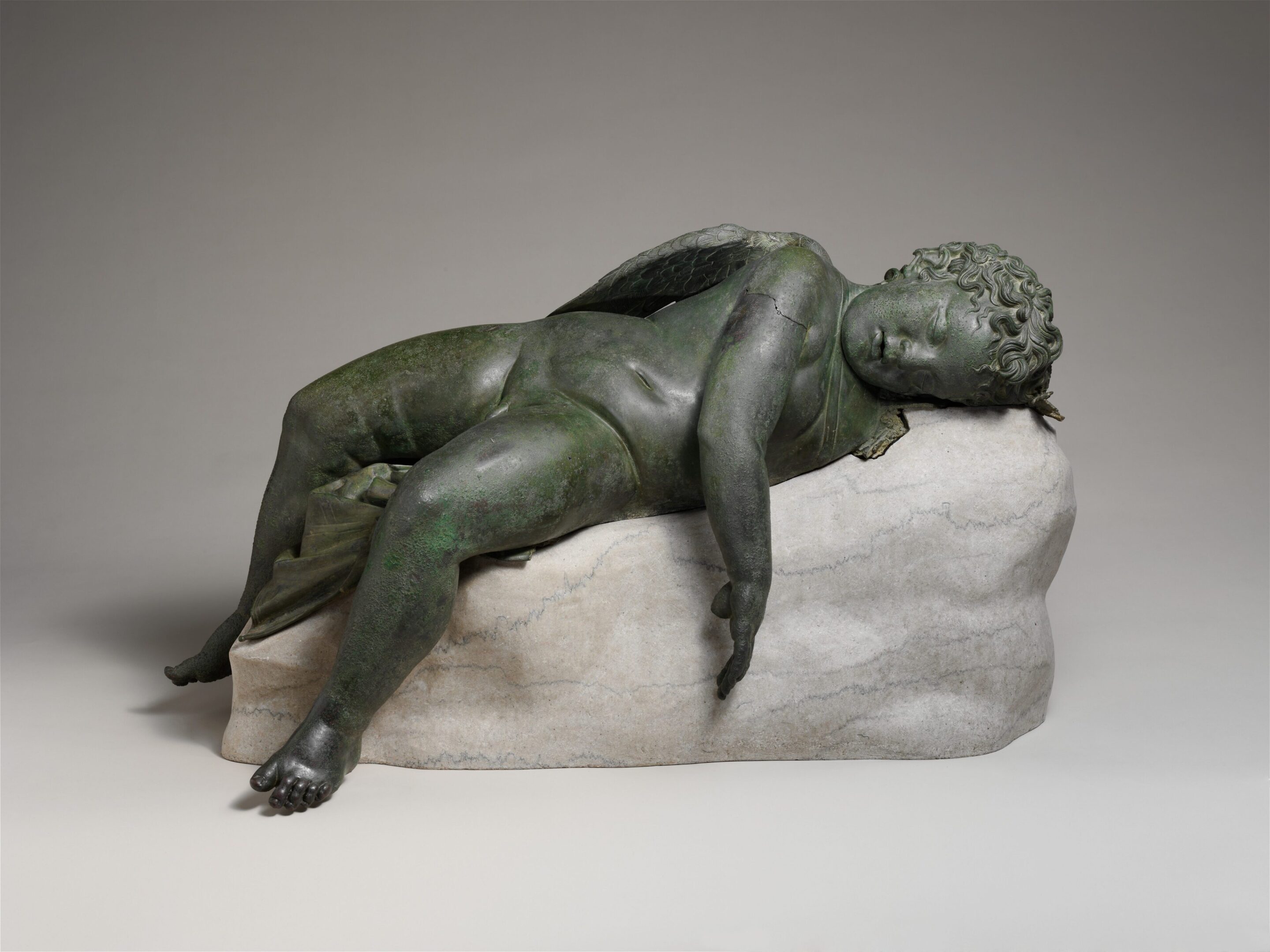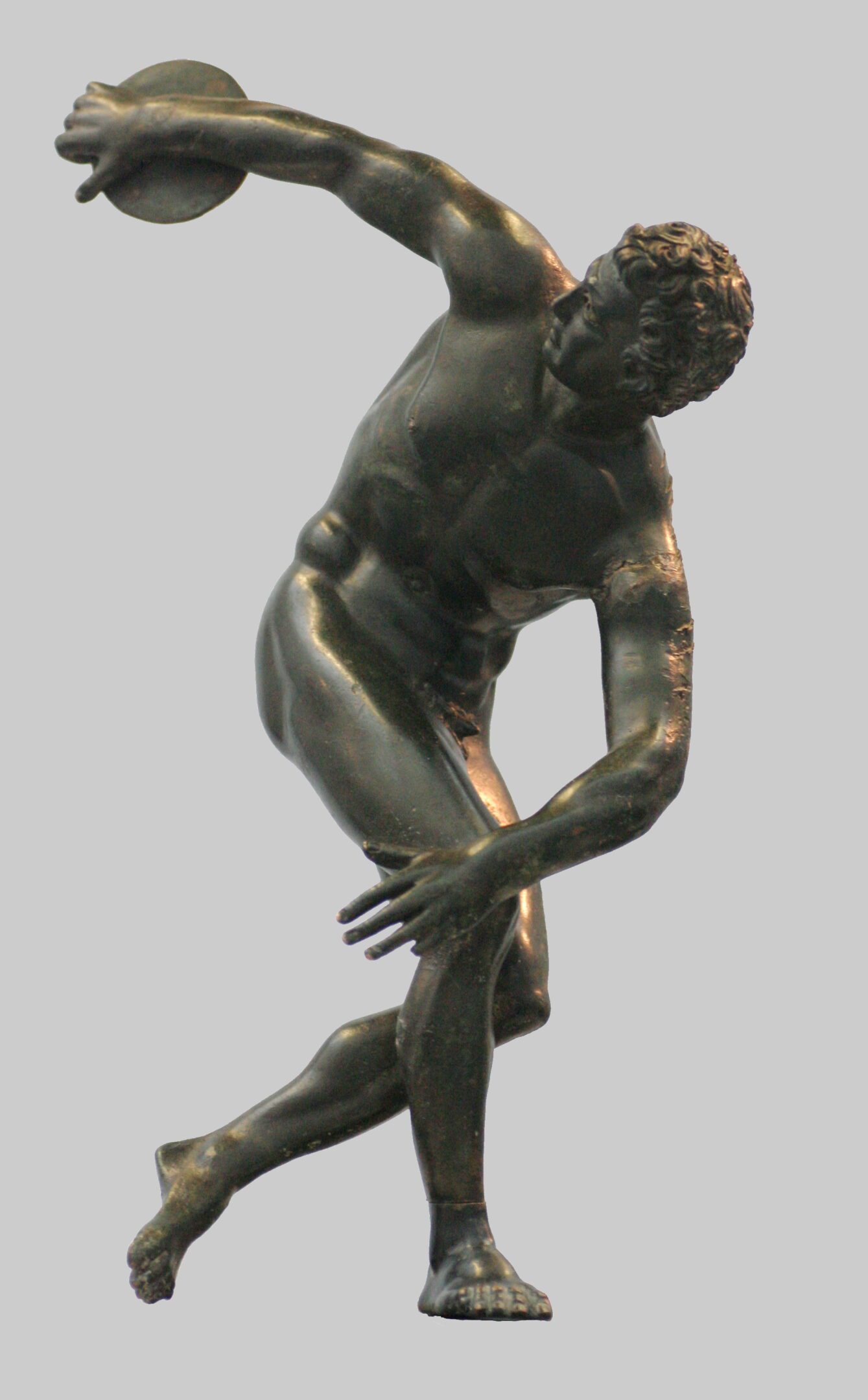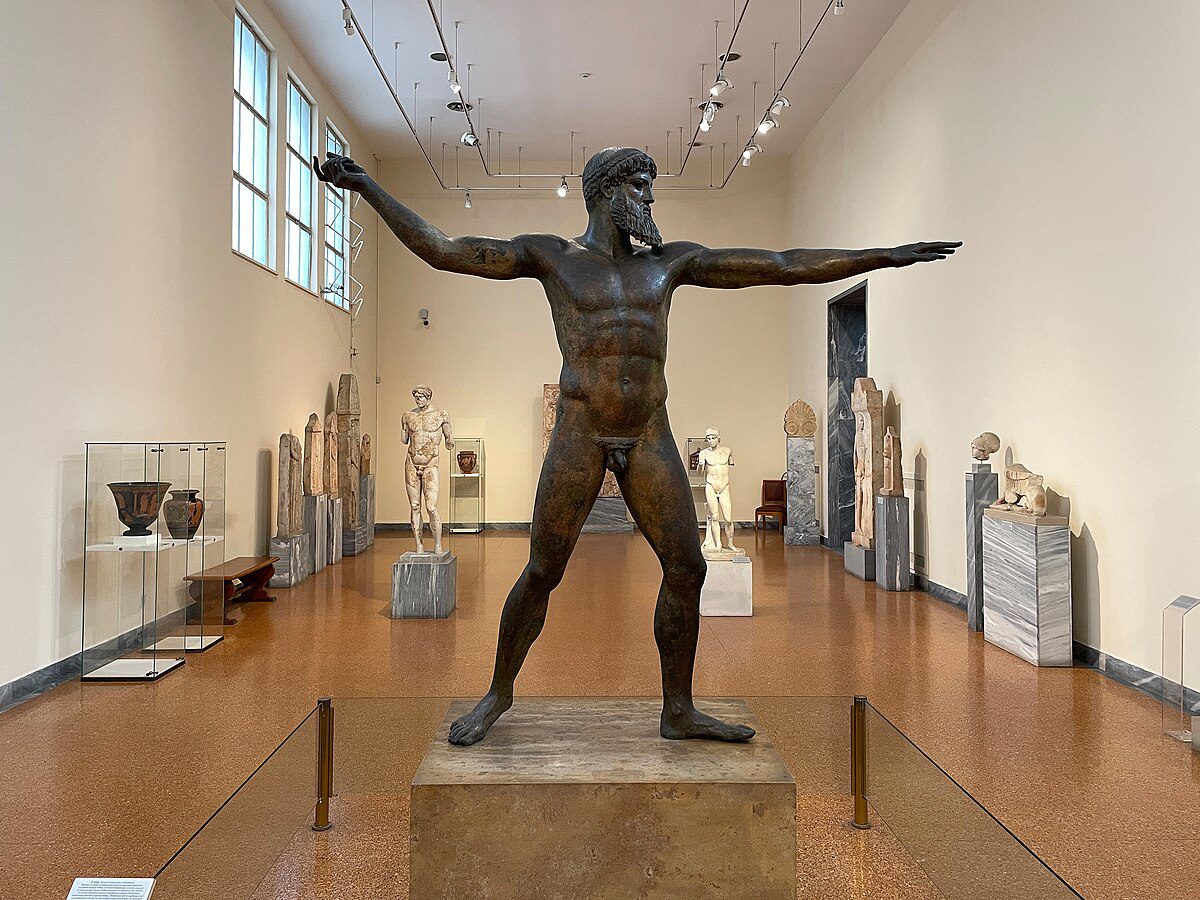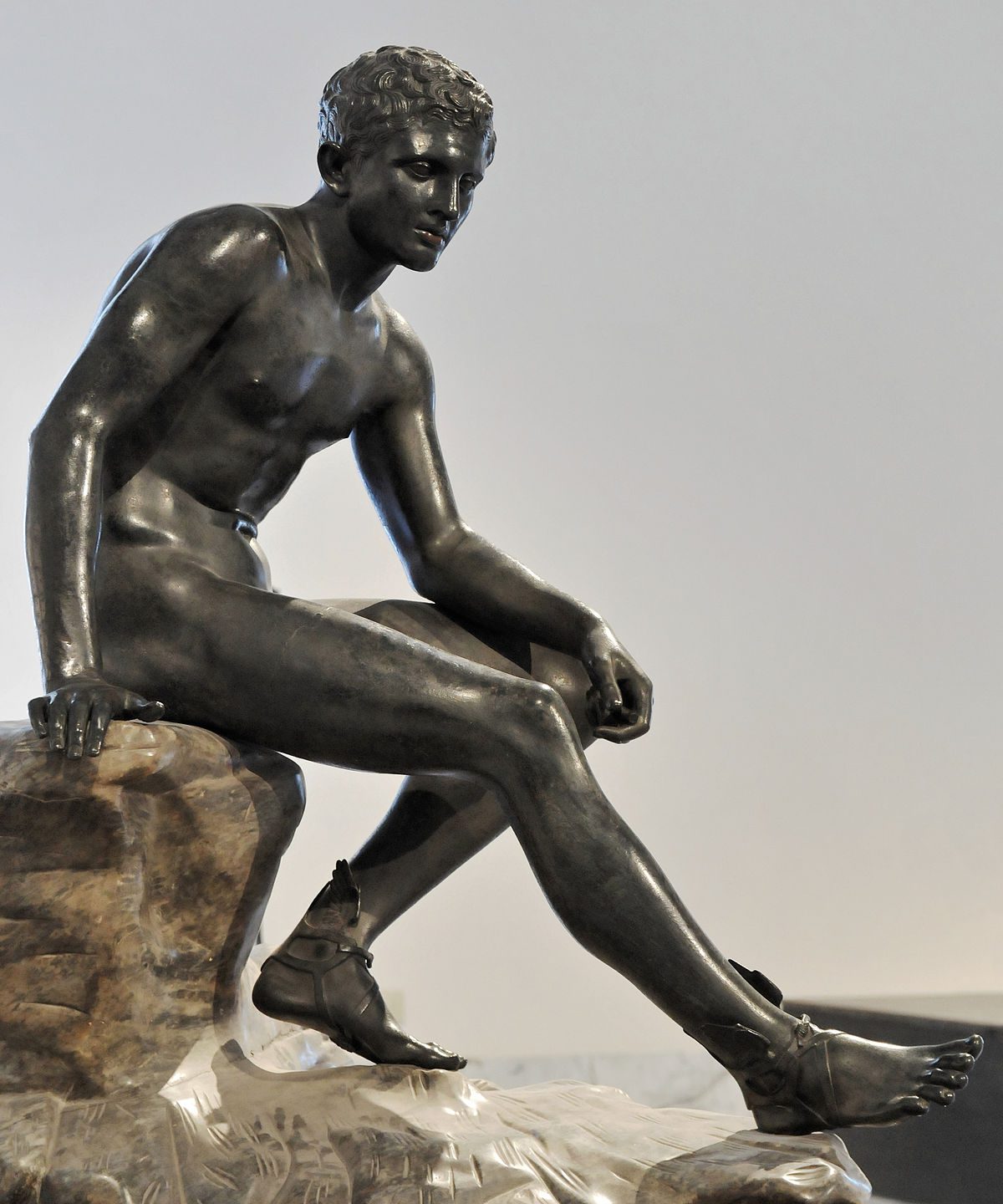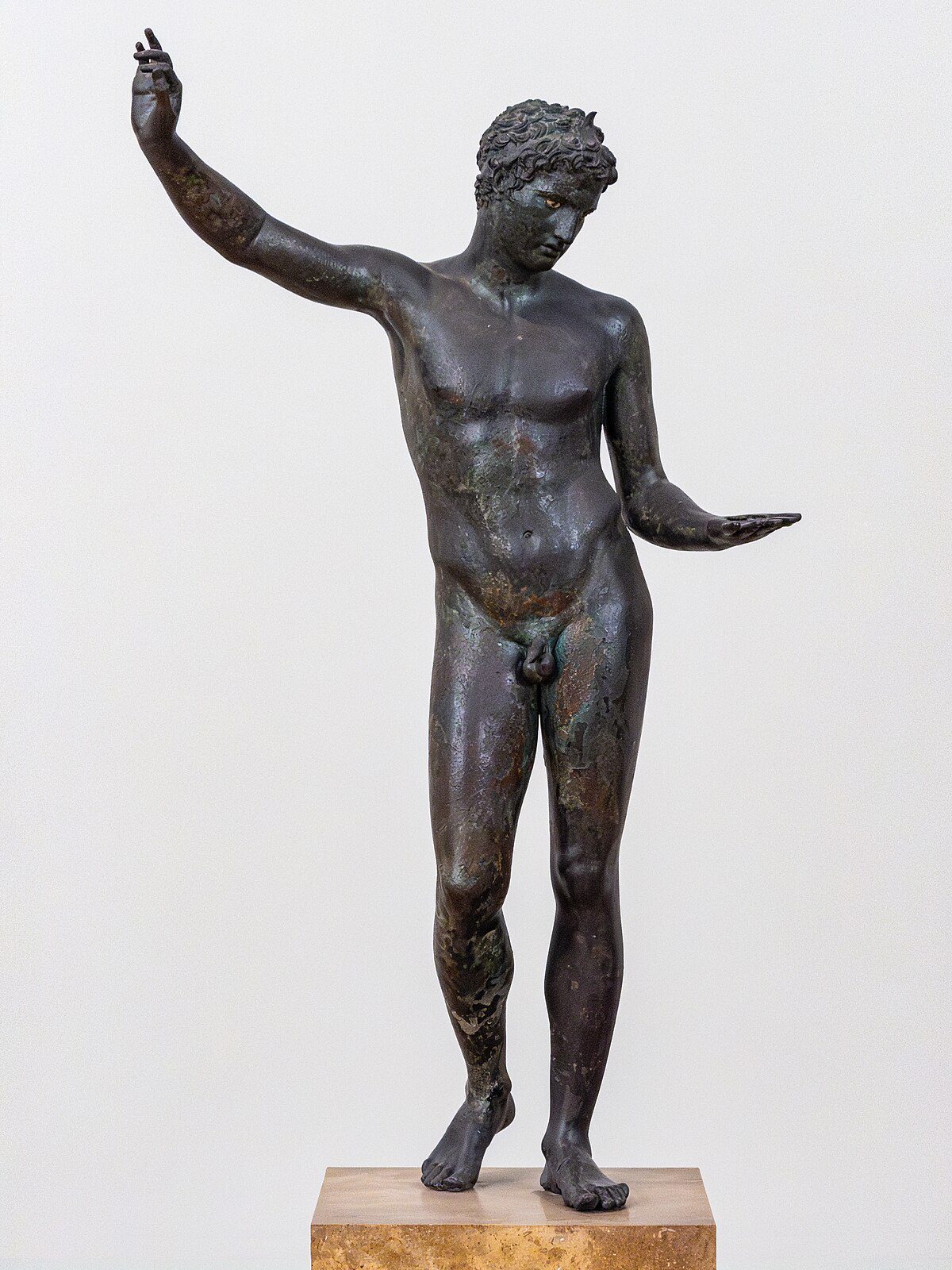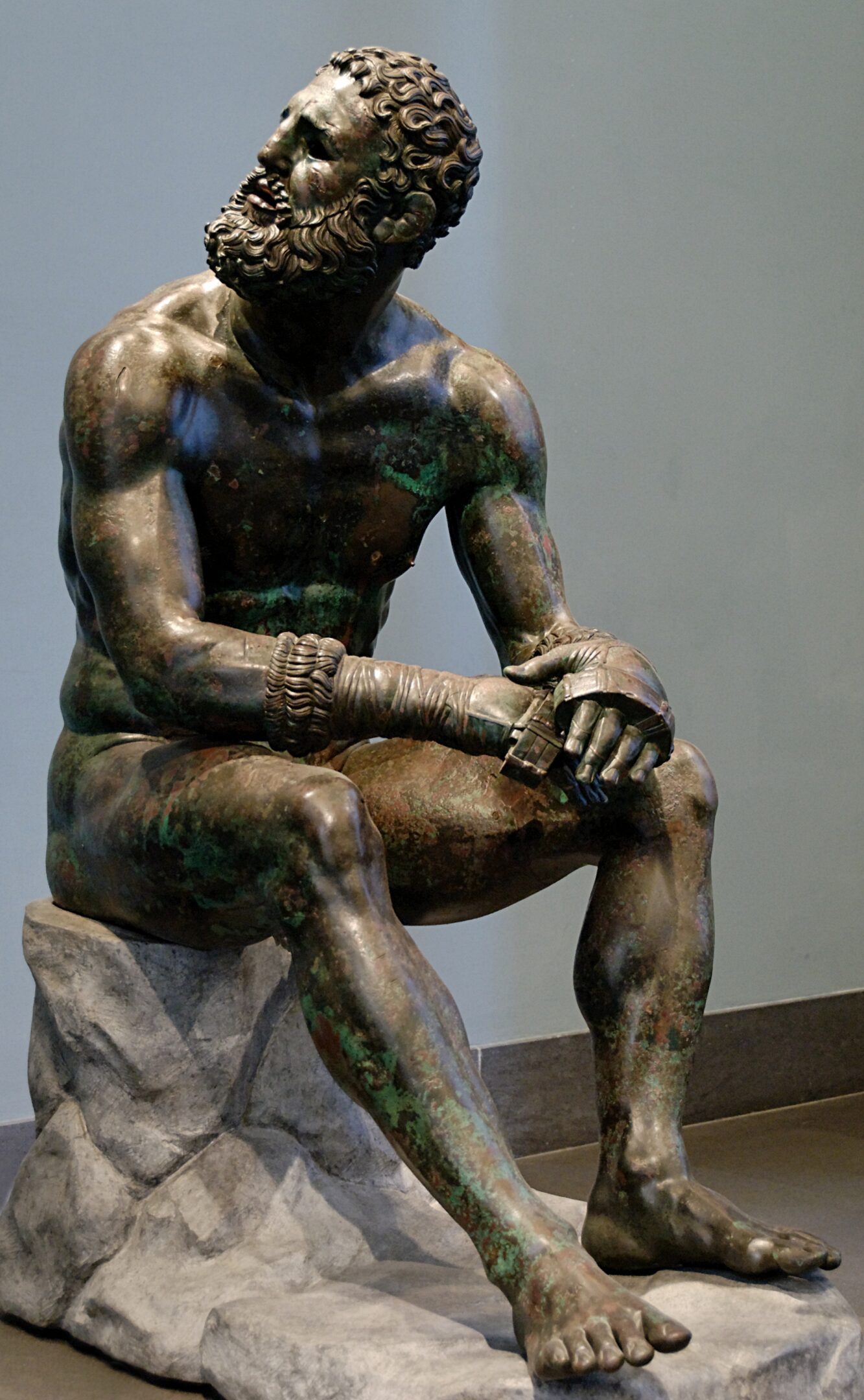Greek Bronze Sculptures 800-323 BC
Greek bronze sculptures from 800 to 323 BCE represent some of the most advanced and influential works of ancient art, showcasing a mastery of form, balance, and naturalism. While many original bronzes were lost or melted down over time, surviving pieces and Roman copies reveal a tradition that evolved from stylized Geometric figures to the dynamic realism of the Classical and Hellenistic periods.
Using the lost-wax casting technique, Greek sculptors like Myron, Polykleitos, and Lysippos created lifelike statues of gods, athletes, and heroes that emphasized idealized proportions, movement, and anatomical precision. Iconic works such as the Riace Warriors and the Delphi Charioteer display a remarkable sense of tension, rhythm, and lifelike presence, reflecting the Greeks’ deep reverence for the human form, physical excellence, and divine beauty.
